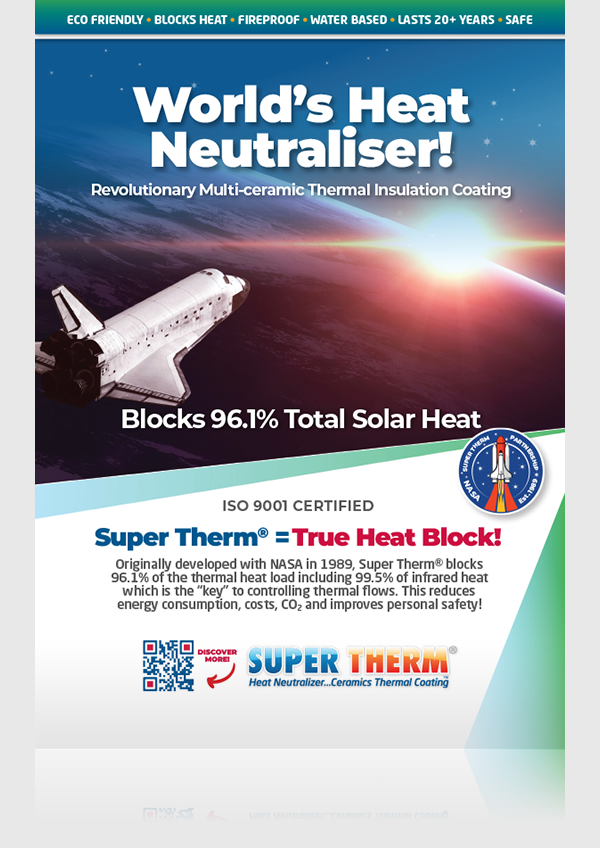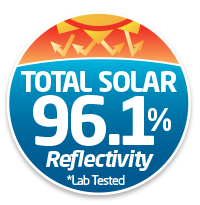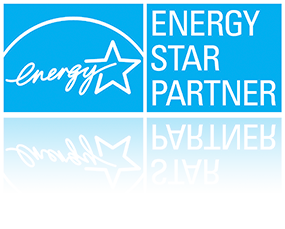Ceramic Paint-On Insulation: Does It Work?
We’re a little confused by this article from By Lloyd Alter, October 11, 2018. It’s almost like they want Super Therm to not be real and even say it goes against all their learning…yet he says ‘On the other hand, I really want this stuff to work‘. Lucky for Lloyd it is the real deal. Read on.
Shipping container housing has gone so mainstream that USA Today covers it; on seeing the picture of Peter DeMaria’s Redondo Beach house I was reminded of a question that I had when I first learned about it. One of the major problems with dealing with steel containers is insulation; the inside dimensions aren’t big, and if you furr out and insulate them there is not much left inside. If you insulate outside, they don’t exactly look like shipping containers anymore.
DeMaria insulates the shipping containers with “ceramic insulation”- a spray or paint on system “developed by NASA” that the supplier claims addresses “all three modes of heat transfer – Radiated, convected and conducted.”
The real Super Therm® wasn’t developed by NASA…it was developed with NASA‘s input. Super Therm® was invented and manufactured by Superior Products International II, Inc., Kansas, USA.
The problem is, everything I ever learned in Architecture School and practice tells me that this is impossible.
What the Manufacturers Say
The manufacturer claims that its Super Therm® “consists of a specially tuned compound of 4-different ceramics thermo-dynamically tuned to cover the IR, UV, & Visible Light Spectrum, the Thermal Spectrum from -40°-F to 450°-F; as well as 68% of the Sound Spectrum! Super Therm® is a Thermal Barrier NOT a Thermal Absorbent! It stops the thermal vibration continuance by its ultra low density.” They call R-Values, the standard measure of insulation, a “Fairy tale”, throwing away an entire canon of building.
The real Super Therm® has been tested to block most of the Infrared heat, 92% visual and 97% UV and stop heat load unlike any other coating. Super Therm® has been rated to also block 50-68% acoustic sound. R values aren’t used by paints and coatings. We use U values for paints and coatings based on energy transfer through and heat loading. The real Super Therm® at a very thin 0.25mm is rated at a low energy transfer rate of 0.559 W/m2/K…meaning it blocks most of the heat!
What the Architects Say
Greg La Vardera, an architect and now editor at Materialicious, and who I respect and trust, writes in the FabPrefab message boards “I can testify to its effectiveness. It seemed like hocus pocus to me until David Cross gave me a very convincing demo involving a strip of steel coated with Super Therm, an acetylene torch, and my fingers.”
Peter DeMaria of DeMaria design is a respected architect, working with people I know, and architects usually don’t take big risks on new materials unless they are convinced about them.
What the Doubters Say
The Environmental Protection Agency says on their Energy Star site that “EPA does not recommend paints and coatings be used in place of traditional bulk insulation. We haven’t seen any independent studies which can verify their insulating qualities.”
The reference links to this Energy Star and EPA sites are both broken. The Scientific American Journal does reference the quote above in their article from 2009. Lots has progressed since 2009. Fortunately Super Therm was developed in 1989 with the same proven, trusted and tested formula. The real Super Therm® by Superior Products International II. Inc. has over 700 pages of testing globally and is much better than ‘plain old acrylic paint’ as it also blocks most of the total solar heat…read our testing results for yourself.
Alex Wilson at BuildingGreen, who I also respect, writes “To say that there is a lot of hype about insulating paints and radiant barrier coatings is an understatement. The Internet is rife with claims of paints that dramatically reduce heat transfer–usually based on some technological magic spun off from NASA. While these products may have some relevance in the extreme conditions of outer space, manufacturers of paints containing “ceramic beads” or “sodium borosilicate microspheres” are making claims that defy the laws of physics–and independent test results–when they claim they can save significant energy in buildings.”
We’ve seen all the hype, imitators and deception in the marketplace as well. One of the worst articles for this is on Wikipedia which we highlight all the wrong facts about insulation coatings and paints along with misinformation. The real Super Therm® is very much based on science and physics of micron sized ceramics that reflect the 3 heat waves and prevent heat load. It’s very logical in its formulation…again with independent results. With regard to NASA…enjoy the read.
As an architect, I tend to discount products that turn everything I ever learned about insulation on its head, and where the only information I can find is on the cheesiest website on the internet. On the other hand, I really want this stuff to work, not just for container housing, but for the tens of thousands of old houses like mine that are impossible to insulate, but that might suddenly become energy efficient if I painted the inside with this miracle insulation.
Interesting this architect admits ‘I tend to discount products that turn everything I ever learned about insulation on its head…’ we are buoyed to see Lloyd wants to see ‘this stuff to work‘. Super Therm® does! Even the Florida Energy Office ran 3 independent tests and concluded 20-50% energy savings. We’d like to work closer with open minded architects, Government and builders to prove it more in Australia. As Super Therm Energy Saving Heat Block Ceramic Coating has been used around the world successful it’s miles ahead of anything in the marketplace. We do solve heat issues with shipping containers along with retrofitting many homes globally.
I think I will hop in my water-powered car and go get some.
See how much has moved on from this old article. Water-powered cars are here: To fuel a hydrogen car from water, electricity is used to generate hydrogen by electrolysis. The resulting hydrogen is an energy carrier that can power a car by reacting with oxygen from the air to create water, either through burning in a combustion engine or catalyzed to produce electricity in a fuel cell. Thanks



























